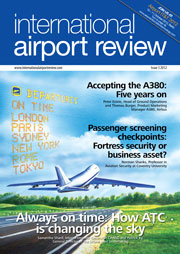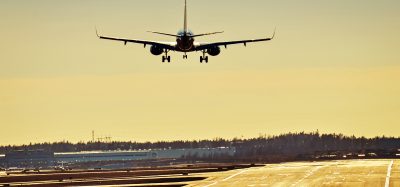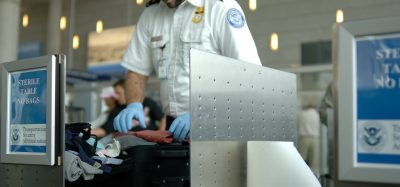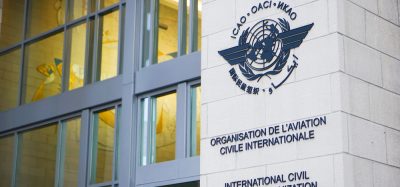To be the best means being safe
- Like
- Digg
- Del
- Tumblr
- VKontakte
- Buffer
- Love This
- Odnoklassniki
- Meneame
- Blogger
- Amazon
- Yahoo Mail
- Gmail
- AOL
- Newsvine
- HackerNews
- Evernote
- MySpace
- Mail.ru
- Viadeo
- Line
- Comments
- Yummly
- SMS
- Viber
- Telegram
- Subscribe
- Skype
- Facebook Messenger
- Kakao
- LiveJournal
- Yammer
- Edgar
- Fintel
- Mix
- Instapaper
- Copy Link
Posted: 6 June 2012 | Arun Rao, former Chief of Aerodromes, Air Routes and Ground Aids, ICAO | No comments yet
The growth of air traffic movements to meet the demands of the travelling public has led to the expansion and modernisation of airports to handle a greater number of aircrafts of different sizes and capacities. Airports have been competing amongst themselves to be the best, to succeed in attracting and retaining the traffic. The ‘World’s best airport’ and ‘the best airport in its class’ etc. are making headlines indicating that success and recognition continues to be strived for. But, success has its own demands. The claim to be the ‘best’ means shouldering tremendous amounts of responsibility, being accountable for the actions (or inaction) concerning safety and security of operations.
The aviation safety regulator, airport and airline operators and other services providers are all equally responsible to assure safety of the travelling public. The expectations are high as safety and efficiency has so far been maintained through a very professional approach. Daily airport operations bring up many challenges needing a proactive approach to safety management and assurance.
The Flight Safety Foundation (FSF) has observed that aviation accident rates have decreased significantly but the rate per million departures has now tapered off to a near constant 0.57, which is worrying as the number of operations is increasing globally.


The aviation safety regulator, airport and airline operators and other services providers are all equally responsible to assure safety of the travelling public. The expectations are high as safety and efficiency has so far been maintained through a very professional approach. Daily airport operations bring up many challenges needing a proactive approach to safety management and assurance.
The Flight Safety Foundation (FSF) has observed that aviation accident rates have decreased significantly but the rate per million departures has now tapered off to a near constant 0.57, which is worrying as the number of operations is increasing globally. Furthermore, Boeing accident data indicates that about 70 per cent of all accidents happen in the final approach and landing phase as well as the takeoff phase of a flight. This data points to the need for managing airport operations with the intention of reducing this high percentage of accidents through due diligence and high levels of efficiency. Further improvement is needed at all levels so that the current reputation, that aviation is the safest mode of mass transportation of public and cargo, is maintained.
Why should there be such an emphasis on safety? Having been accustomed to high levels of safety performance, the travelling public continues to expect this same level of excellence. Users are becoming increasingly aware of the safety regulations, their rights and privileges and the ability to seek legal help if something goes wrong. This has added to the burden of ‘responsibility and accountability’ for all airport operators and regulators alike. The dynamic airport operating environment, with its many challenges and day-to-day problems, needs a constant 24/7 safety oversight for an effective, pro-active safety assurance. The ICAO Annex 14, Volume I requirement for all member nations to certify their international aerodromes for compliance with the safety specifications in Annex 14 and other relevant ICAO Annexes, is intended to assure that a certified airport meets all the specified safety requirements, applicable at the time of the certificate being granted.
While the regulator has the responsibility to carry out periodic surveillance to ensure that the airport operator has not deviated from the agreed level of safety, the airport operator, being always present at the airport, has to ensure that the levels are indeed maintained and well managed. Both parties are obligated to ensure that safety is always given top priority.
To ensure that safety is indeed given the top priority and that every flight is safe, secure and efficient, is through compliance with the applicable safety regulations through a professional approach. However, it may not be just sufficient to only comply with the safety specifications.
There is a need for managing the day-to-day operations pro-actively with a systematic approach to safety that goes beyond mere com – pliance with the safety minimum specifications. The airport operator must have a system in place to identify potential hazards and associated risks at all stages from planning to design, to construction and operations, in order to develop appropriate risk mitigation measures so that aircraft operations are safe at the airport.
It is essential to provide safety assurance to the travelling public. If we want our airports to be the best in the world, we must be prepared to accept world class responsibilities to provide the safest and most efficient air transport system. Safety management must become a way of life, requiring a significant change in the way we look at and oversee safety. Safety management and assurance must be part of the work cultures, the mantra of every airport professional. It must be ensured that every item of work, big or small, large or trivial, is carried out with safety as the prime objective. Only then can we claim to be the world’s best.
About the author
Arun Rao has over 39 years of experience in airport development, design and construction working in many countries including the Maldives, Mauritius, Guyana and Canada. He has worked with ICAO for over 15 years, of which the last 13 years was as Chief of the Aerodromes and Ground Aids (AGA) Section, in ICAO responsible for Annex 14 to the Chicago Convention.
Since retirement in-late 2007, Mr Rao has been a consultant and is a member of the Civil Aviation Safety Advisory Council of the Ministry of Civil Aviation, New Delhi. He also teaches at the Singapore Aviation Academy on Annex 14 and aerodrome certification, operational safety and safety audits.
















